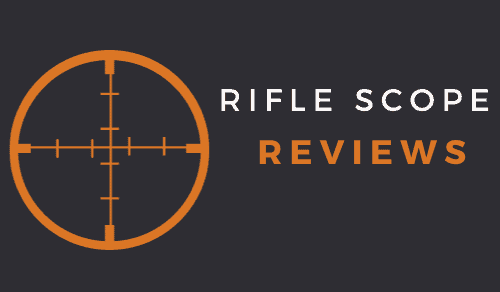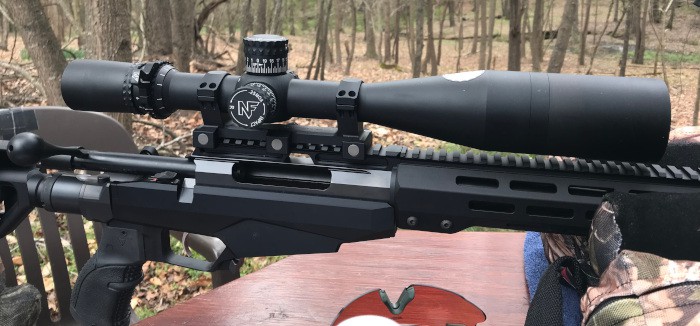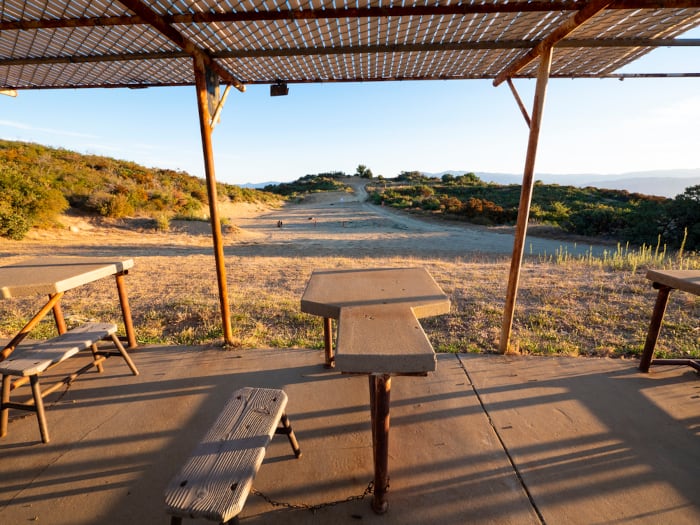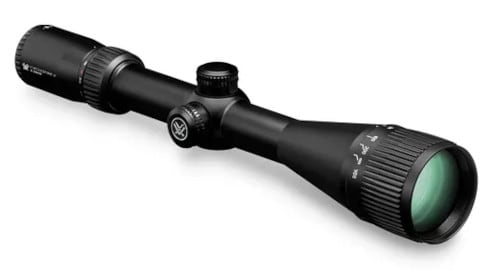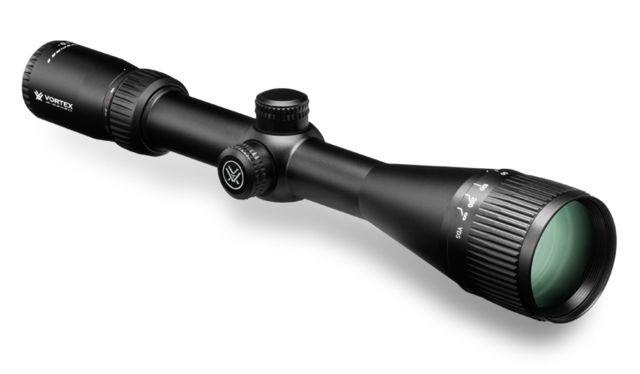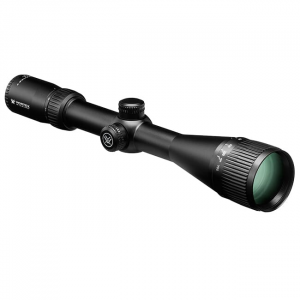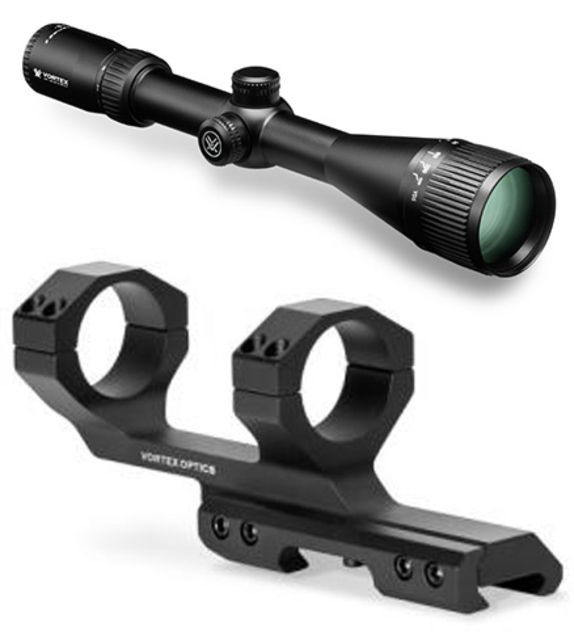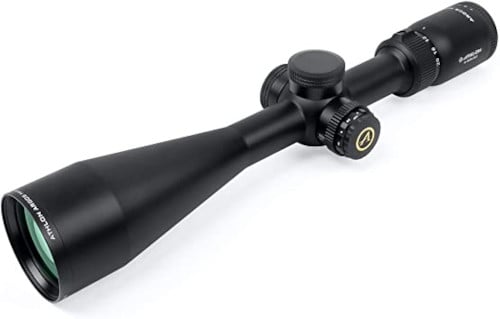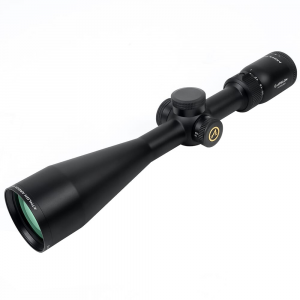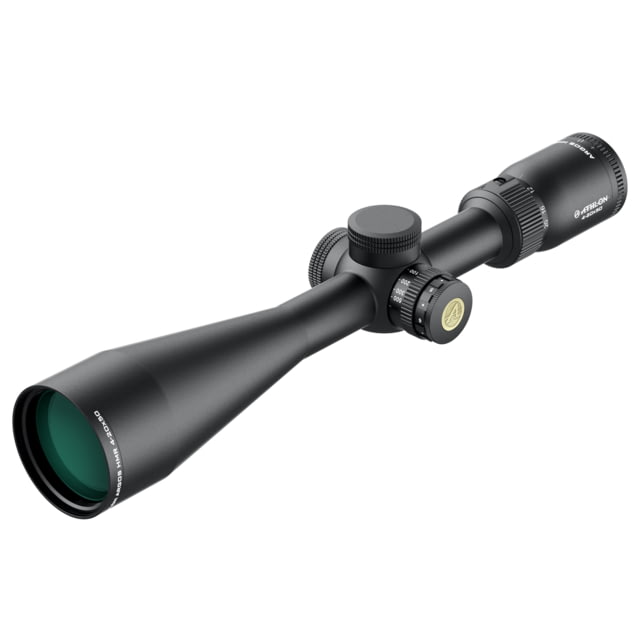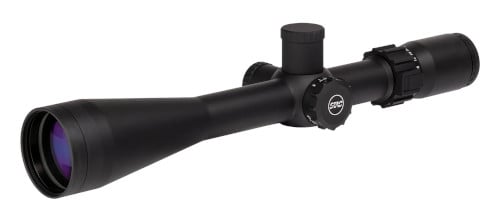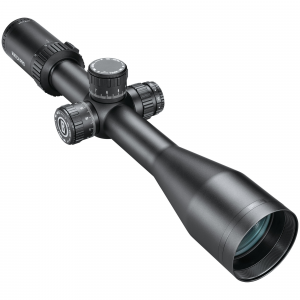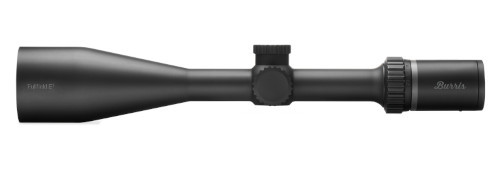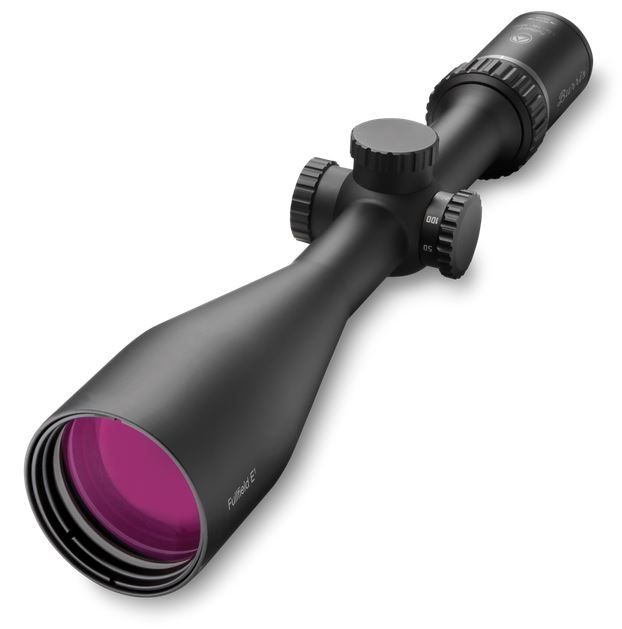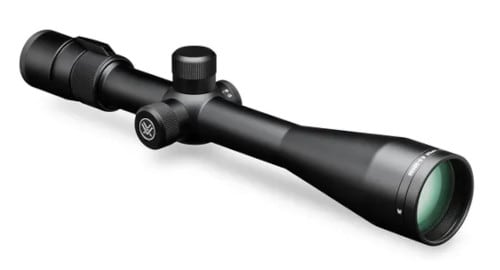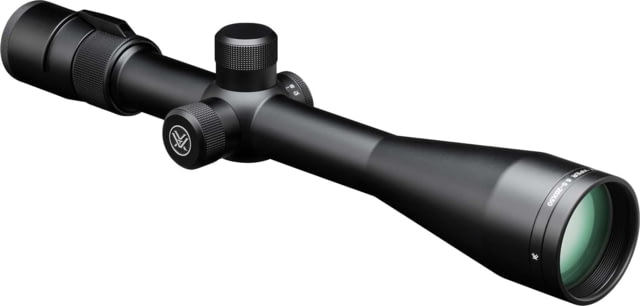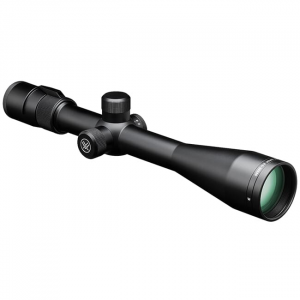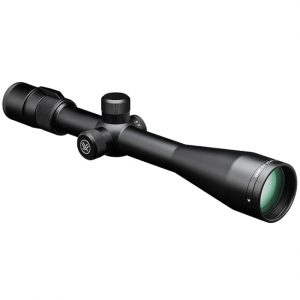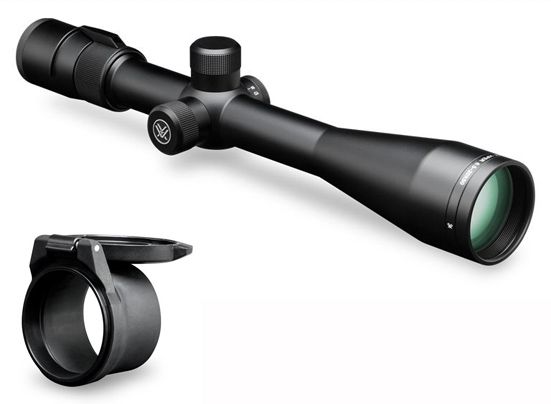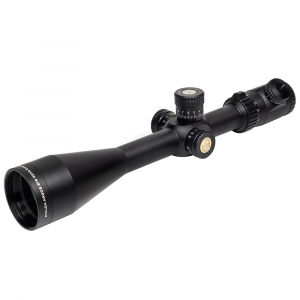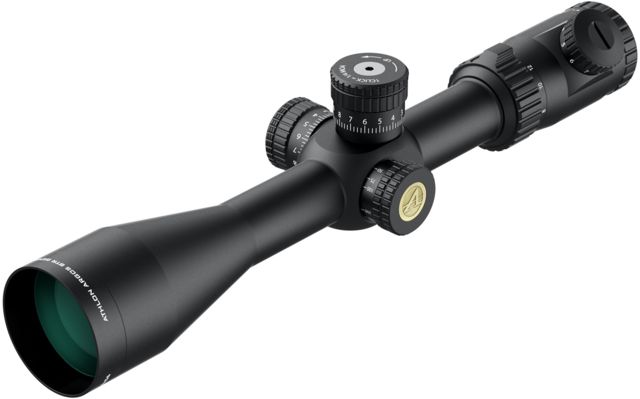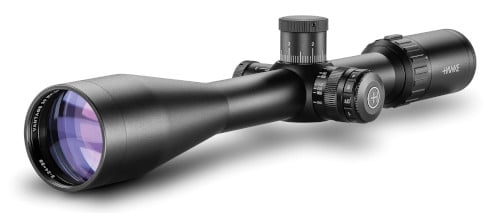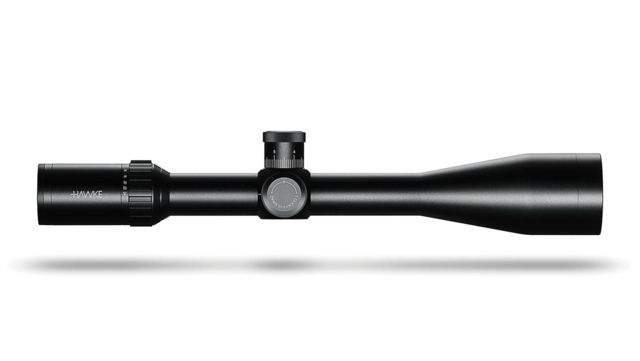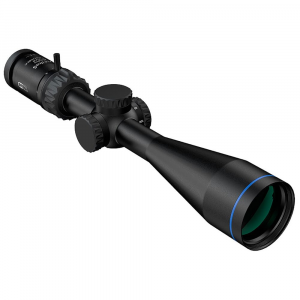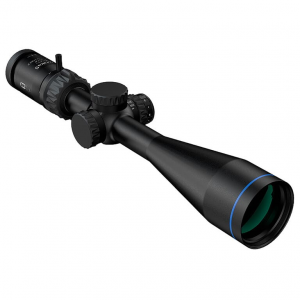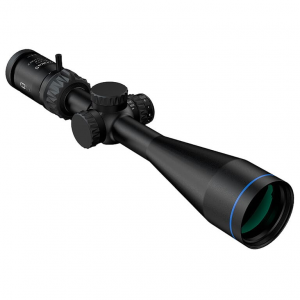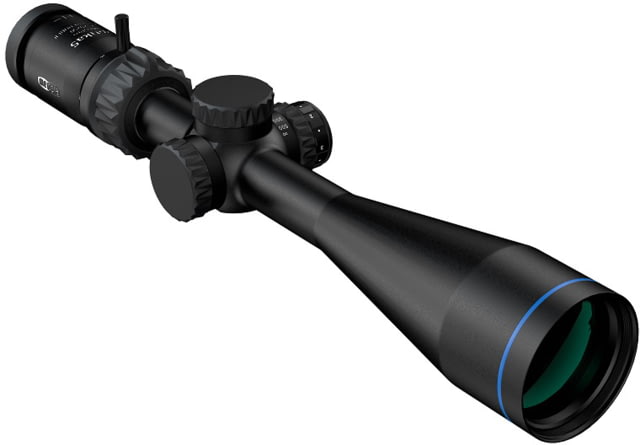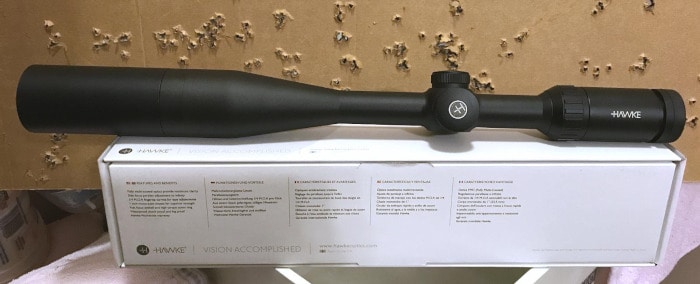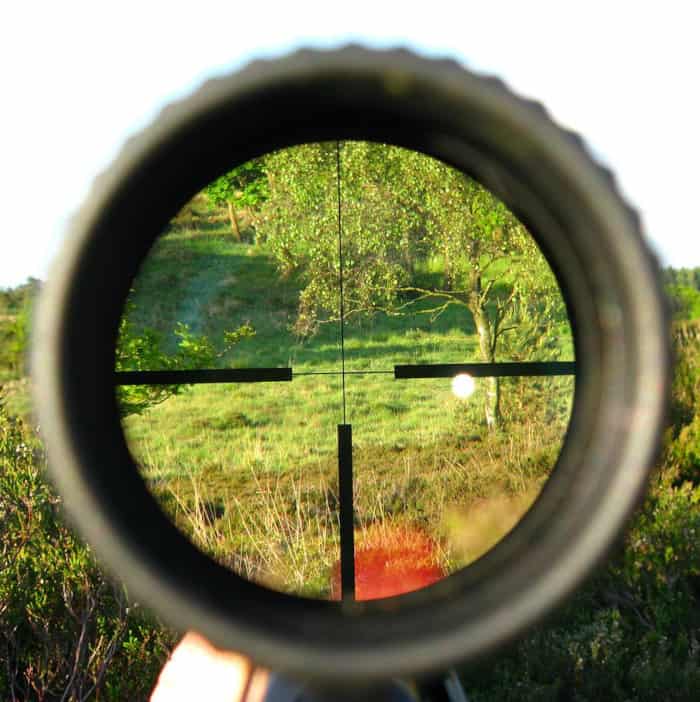As an Amazon Associate I earn from qualifying purchases. Amazon and the Amazon logo are trademarks of Amazon.com, Inc, or its affiliates.
The term “long range shooting” is a catch-all phrase used to describe various shooting disciplines where the distance to the target requires the shooter to consider ballistic factors like bullet drop and wind to hit the target successfully. Long distance shooting is also one of the fastest-growing segments within the shooting industry. However, setting up a long-distance rifle can really stretch the budget as well. Due to the costs commonly associated with distance shooting, one of the common questions I see asked is: what’s the best long range scope under $500?
Before getting into specific scope recommendations that meet the sub $500 pricing criteria, let’s dive a little deeper into the general topic of long-range shooting and the different types or styles of long-distance shooting.
What is Long Range?
It’s tough to clearly define what distances constitute “long range” because no specific definitions or rules exist. In addition, the rifle caliber can also play a role in defining a long-range distance. For example, when shooting a 22LR rimfire round, I’d consider a minimum distance of 100 yards to meet the long-range criteria.
However, if you ask ten different shooters to define their criteria for long-range shooting, you’ll most likely hear a variety of answers. While the exact distances can vary with centerfire rifle calibers, most shooters consider a target distance in the 500 yards to 1000 yards range to meet the general requirements to qualify as long-range.
Types of Long Range Shooting
Within the long-range shooting category, several sub-groups participate in different types or styles of specific long-distance shooting. For the most part, those groups include the following:
- Long Range Target Shooting
- Long Range Hunting
- Long Range Competition
Let’s a dive a little deeper into each of the different types of distance shooting disciplines:
Long Range Target Shooting
This type of long-distance shooting is probably the most common and most popular variant of long-range shooting.
In this type of rifle shooting, the shooter shoots at paper or steel targets at distances between 500 and 1000 yards. With paper targets, the shooter is aiming for the tightest groups or trying to hit the X. With steel targets, the shooter is trying to ring the steel at those distances. In most cases, the paper or steel targets are in a stationary position.
Long Range Hunting
This style of longer distance shooting involves the hunting of different game species and shooting at those animals at longer distances. While there have certainly been some game species that were ethically harvested at distances of 1000 yards, most long-range hunting shots are taken at distances in the 400-to-800-yard range.
Several factors go into a hunter taking a long-range shot at an animal, including:
The specific game species
Some game species are better suited for long-range hunting than others. A few examples of these types of species would be:
- Pronghorn Antelope
- Mule Deer (depending on the state and terrain)
- Coyote (depending on the state and terrain)
- Whitetail Deer (depending on the state and hunting terrain)
- Prairie Dogs
- Groundhogs
Depending on the geographical location and terrain, hunters with the species listed above may have opportunities with shots that range from 300+ yards out to 700 yards. From a personal perspective, my current longest shot on a game species is a groundhog harvested at a lasered 422 yards with a .204 Ruger bolt gun.
Much of the potential opportunities for rifle shots at longer distances can be determined by the geographical area you hunt. For example, hunters in the central and western parts of the U.S. will have long-distance hunting opportunities that won’t likely be available to hunters in the Southeastern part of the U.S.
The skill and long-distance shooting experience of the hunter
The skill, shooting experience, and ethical position of the hunter play a significant role in longer distance hunting. Most ethical hunters interested in long-range hunting spend substantial time at the range practicing at the longer distances.
Not to get on my soapbox, but the ethical issue “should” play a role as well as the ethical hunter may have to pass on long-distance shots at game where some aspect of the situation causes them to have second thoughts. It may be the shooting distance, shooting position, position of the game species, etc., that causes the hunter to question the ethics of the shot or the ability to make an ethically humane one-shot kill.
I’ve had to make these decisions more than once in the field and passed on taking a shot at some distance. I wasn’t sufficiently comfortable with my shooting position to complete the shot in most cases.
On a side note, I’m funny about shooting positions as they have to be rock solid for me even to consider any shot over 200 yards. And I won’t even attempt an offhand shot as I don’t feel steady enough to be accurate.
The specific shooting conditions
Another aspect of long-range hunting that comes into play includes the specific shooting conditions. Those conditions can consist of a plethora of situations such as:
- The animal may not be recoverable
- Weather elements such as high wind, rain, or low visibility
- The position of the animal isn’t ideal (for example, does standing in front of a buck)
- The hunter’s shooting position isn’t stable
Many other situations could interfere with a long-range shot on an animal, so it doesn’t make sense to list all of them.
Long Range Competition
As long distance shooting has grown in popularity, several competitive long-range shooting formats have been created. These formats vary in the type and style of long-ranging shooting and emphasize different elements of longer distance shooting.
Some competition formats are designed to mimic longer distance hunting scenarios, while others are more focused on the tactical side of distance shooting.
The more popular and well-known competition formats include:
- F Class
- Precision Rifle Events
- T-Class
- IBS 1000 Yard
- Long Range Rimfire
- Long Range Precision Rifle
- Palma League
Each of the competition formats listed above features unique rules and requirements. For example, some formats are timed, while others are not. Some formats also have rifle weight requirements.
10 Best Long Range Rifle Scope Under 500
Optic Brand & Power Range | Image | Tube Size | Focal Plane | Reticle Options | Shop |
Vortex Crossfire II 6-24x50 | 30mm | Second Focal Plane | Dead-Hold BDC V-Brite | ||
Athlon Argos HMR 4-20x50 | 1 inch | Second Focal Plane | Mil-Dot AHMC MOA BDC 600A | ||
Sightron S-TAC 4-20x50 | 30mm | First and Second Focal Plane Options | Duplex MOA-2 | ||
Bushnell Match Pro 6-24x50 | 30mm | First Focal Plane | Deploy MIL Illum. Deploy MIL | ||
Burris Fullfield E1 6.5-20x50 | 1-inch | Second Focal Plane | Ballistic Plez E1 MV | ||
Vortex Viper 6.5-20x50 PA | 30mm | Second Focal Plane | DeadHold BDC Mil-Dot | ||
Athlon Argos BTR Gen2 8-34x56 APLR2 FFP IR MOA | 30mm | First Focal Plane | APMR FFP IR MIL | ||
Primary Arms SLx 3-18x50 | 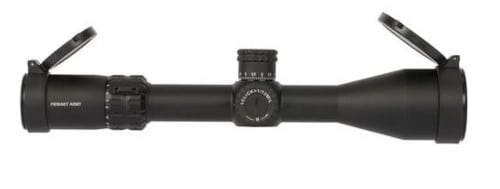 | 30mm | First Focal Plane | Multiple Versions of The ACSS Reticle | |
Hawke Vantage 30 WA SF 6-24x50 | 30mm | Second Focal Plane | Illum. Half Mil Dot | ||
Meopta Optika5 4-20x44 |  | 1 inch | Second Focal Plane | Z-Plex Illum. Z-Plex Z-Plus Illum. Z-Plus Illum. BDC 3 |
Here are my top 10 recommendations for longer distance scopes costing less than $500. Note that these suggestions are based on a blend of the scope performance, features, and costs. In addition, I’ve tried to focus on scope models that cover a wide range of costs versus just focusing on the models that are right at the top of the $500 limit. Finally, if you need any help, I’ve included a long range scope buying guide below.
Vortex Crossfire II 6-24×50
The Vortex Optics Crossfire II scope in a 6-24×50 configuration is an excellent long-distance scope option with a mid-range price point under $500.
While some Crossfire II scope models are built on a 1-inch tube, this specific model is built on a 30mm tube. As a result, the 6-24 power magnification range is enough to handle most long-range shooting situations.
This scope is available in two different reticle options:
- Vortex DeadHold BDC
- Vortex V-Plex
Between the two, I prefer the Dead-Hold BDC reticle as I find it more versatile than the V-Plex reticle.
While the optical quality isn’t the best I’ve ever seen, it’s better than average for an SFP optic in the sub $400 price range. In addition, this specific model features an adjustable objective that will focus down to 10 yards (which is a big plus in my book).
However, no riflescope is perfect, so here are some features that I like and a few that I didn’t care for:
Pros
- Better than average optical quality and light transmission at this price point.
- Adjustable objective with a parallax adjustment focusing down to 10 yards.
- Durable and well-built.
- Backed by Vortex’s outstanding lifetime warranty.
- The DeadHold BDC reticle is equipped with bullet drop compensation if needed or wanted.
Cons
- While the adjustable objective is undoubtedly better than no parallax adjustment, I prefer a side focus option over the adjustable objective.
- Not an overly heavy scope at 23 ounces, but not exactly lightweight either.
- The glass has some mirage and flare at the top end of the magnification range, but that’s not uncommon with an optic at his price point.
If you like this Crossfire II Optic, here are a few places I found it available:
Athlon Argos HMR 4-20×50 SFP MOA (214006)
Built on a 1-inch tube, the Athlon Argos HMR in a 4-20×50 configuration is another good SFP riflescope costing less than $500.
While Athlon Optics isn’t as well-known as some of the other scope brands mentioned on this page, they produce some very good to excellent first and second focal plane optics at very reasonable prices.
While some riflescopes are on this list with a higher magnification power, the 4-20 power range is sufficient for most long-range shooting. This Athlon scope model is available in 3 different illuminated reticle options:
- Illuminated Mil-dot
- Illuminated AHMC reticle
- Illuminated BDC-600A
Of the three reticle choices, I prefer the mildot or BDC-600A reticles because they offer integrated bullet drop compensation (if desired). I also like the fact that all three reticle choices are illuminated.
This Athlon riflescope features a side focus feature for parallax adjustment that focuses down to 10 yards. As I’ve mentioned previously on this blog, I prefer the side focus feature for convenience and ease of use, given a choice between side focus or adjustable objective.
The glass quality is good for the price, and this model comes with 3.6″ of eye relief. The eye relief distance becomes more and more critical when shooting the larger and more powerful calibers that may be used in the long-range game.
Here are a few things I did and didn’t like:
Pros
- The side focus that parallaxes down to 10 yards are a plus in my book.
- While not everyone likes an illuminated reticle, I like having the illuminated reticle option, so the illumination is there if needed or wanted.
- With a length of 13.2 inches, it’s a relatively compact scope.
- The reticle options are good and offer both MOA and MIL choices.
Cons
- The one common downside to illumination is the added weight it brings.
- At 21 ounces, this scope is a bit on the heavy side for a 1-inch model. However, most distance shooting is done off a bench, so the weight may not be a factor in those scenarios. However, for long-range hunting, the weight could be a turnoff.
Here are a few online locations where I located these Athlon HMR optics for sale:
Sightron S-TAC 4-20×50 with MOA-2 Reticle (26015)
Sightron Optics is another brand worth mentioning in any discussion or conversation about long-range shooting. Sightron offers several rifle scopes built explicitly for long distance shooting, including this Sightron S-TAC 4-20×50.
It’s worth noting that Sightron offers two different versions of the 4-20×50 scope, an SFP version and an FFP version with zero stop. For the purposes of this post, I’ll be focusing on the standard SFP version because the FFP variant exceeds the $500 price range.
Manufacturing in the Philippines for Sightron, the SFP based S-TAC 4-20×50 riflescope is built on a 30mm tube and is available in two reticle options:
- Standard Duplex
- MOA-2
Between these two reticle choices, I feel that the MOA-2 is a much better selection for long distance shooting. This MOA-based reticle is exceptionally versatile but excels in long distance situations. The MOA-2 reticle is a proprietary reticle design that features a fine crosshair reticle with a center floating dot and hash marks in 2 MOA increments. Unfortunately, the one area where this reticle doesn’t perform well is in low light conditions commonly associated with hunting situations. So if you’re shopping for a hunting scope, I’d stay away from the MOA-2 reticle.
The optical quality is good for a sub-$500 scope, although there are some edge-to-edge clarity issues at maximum magnification. In addition, this Sightron scope is equipped with a side focus that adjusts down to 10 yards.
With an eye relief range of 3.7 to 4 inches, this scope model offers more than sufficient eye relief to handle large rifle calibers. Also, the scope is well built and stands up to recoil exceptionally well.
Here are things I really like about the STAC 4-20×50 and stuff I wasn’t thrilled about:
Pros
- The glass quality and light transmission is pretty good for this price point. Sightron certainly offers higher quality optics, but they far exceed the $500 limit.
- The side focus that goes down to 10 yards is a nice feature.
Cons
- The reticle options are limited to two choices. Sightron has several excellent reticles geared for longer range, but they are not offered on this scope.
- The Sightron lifetime warranty isn’t the best in the optical business, but it isn’t the worst either.
- This is just a tiny issue, but it irks me to no end. The side focus knob is not marked with any type of distance. Instead, it features a staggered set of lines that indicate turning the side focus down or up.
If this STAC model interests you, here’s a few for sale online:
Bushnell Match Pro 6-24×50 FFP (non-illuminated and illuminated reticle options)
The Bushnell Match Pro 6-24×50 was built and is marketed as a precision scope for longer distance shooting and competition.
Built on a 30mm tube, the Match Pro riflescope is a first focal plane scope (commonly abbreviated down to FFP) with Bushell’s dedicated FFP Deploy MIL reticle.
This Bushnell riflescope is available in an illuminated reticle and non-illuminated reticle version. The illuminated version could be beneficial in low light shooting situations. Both versions feature a side focus option that will parallax down to 10 yards. In addition, the Match Pro uses locking turrets that will adjust in 10 MIL increments.
This scope model also comes with a tool-less turret reset (which isn’t exactly the same as a zero-reset), but very helpful, nonetheless.
This particular scope is up towards the top end of the $500 price point, and the illuminated reticle version may be slightly over $500 (depending on the vendor).
While this riflescope is an excellent FFP option under five hundred dollars, here are a few pros and cons that caught my eye:
Pros
- Very good optical quality for a sub $500 scope. Not as good as some of the upper-end Bushnell Elite scopes, but still very good.
- Locking turrets and some version of turret reset are uncommon for a riflescope at this price point.
- Recoil rated for even heavy centerfire calibers.
- FFP is ideal for long distance shooting as it requires less ballistic math for calculations.
- Wide range of windage and elevation adjustments.
Cons
- This is a small one, but it still bothers me. The Match Pro does not come with a sunshade or scope covers. Those have to be purchased separately.
- Can be hard to scope to locate. They were only available on the Bushnell website for the longest time.
- I’ve seen some complaints that the illuminated version did not come with batteries. (which may be corrected now).
This Bushnell Match Pro is an excellent optic for the money. Here are a few that I located for sale:
Burris Fullfield E1 6.5-20×50 with Ballistic Plex E1 MV Reticle (200341)
Burris Optics seems like one of those brands that isn’t talked about all that much anymore, which is a shame as they manufacture some excellent optics at reasonable prices.
The Burris Fullfield E1 in a 6.5-20x50mm configuration is another sub $500 riflescope that works for long-range on a budget.
The E1 scope series is an updated version of the popular Burris Fullfield series. The optical quality on the E1 version is pretty good but not as good as the more expensive Burris Signature HD or Veracity scope models.
This Burris scope (like all the Fullfield E1 models) is an SFP scope built on a 1-inch tube. It features a side focus option with a parallax adjustment adjusting to 50 yards.
The 6.5-20 version of the Fullfield E1 scopes is only available with one reticle option: Burris’s Ballistic Plex E1 MV reticle. While the Burris literature indicates that this reticle was designed for the 22-250 cartridge, it works with any centerfire or rimfire rifle.
The turrets are capped and non-locking, and this model does not feature a zero rest. In addition, Burris offers custom turret options calibrated to your exact ballistics.
Here are a few things I liked and a few things I wasn’t crazy about on the Fullfield E1 6.5-20 riflescope:
Pros
- With a total weight of fewer than 20 ounces and a length of 14 inches, this is a lightweight and relatively compact scope.
- The side focus is an excellent option to have.
- The optical quality is surprisingly good for a sub $350 optic.
- While the reticle may look a bit busy, it is built for both BDC and wind drift compensation.
Cons
- Even though the parallax adjusts down to 50 yards, I wish it would adjust a bit lower. However, the 50-yard minimum parallax will work fine for most long distance shooting scenarios.
- While the Burris Ballistic Plex E1 MV reticle works for long distance shooting, it would be nice if Burris offered this model with other Burris reticle choices.
Here are a few places I found this Fullfield E1 optic for sale:
Vortex Viper 6.5-20×50 PA
If the Vortex Optics Crossfire II scope I mentioned above isn’t for you, then here’s another Vortex scope worth checking out. The Vortex Optics Viper 6.5-20x50mm PA is an SFP model built on a 30mm tube.
This model features better quality optics than the Crossfire II scope discussed earlier, but it comes with a higher cost. As a matter of fact, the Vortex suggested MSRP for this particular scope puts it over the $500 threshold, but most Vortex dealers sell this riflescope right at the $500 price point. So if your budget was $500 and you wanted to get the best optical quality that you could at that price, then this model is probably worth a look.
Vortex offers this scope with two reticle options:
- DeadHold BDC
- Mil-Dot
Both are MOA-based reticle options, and both work well for more extended distance shooting. However, there’s an issue with the Mil-Dot reticle that I’ll discuss in more detail below. Between the two reticles for this scope, I’d suggest going with the DeadHold BDC for longer-range shooting.
The Viper PA scope is purged with Argon gas to prevent internal fogging, and the rifle scope is waterproof and recoil rated for heavy-duty recoil.
The 6.5-20 version features capped turrets and the ability to utilize a custom turret through Kenton Industries. This optic also comes with a side focus parallax adjustment that will focus down to 50 yards.
Here are the pros and cons that I noted:
Pros
- Excellent optical quality for the cost with surprising low light capability.
- The side focus is a plus.
- Backed by one of the best warranty programs in the optics industry.
Cons
- For some reason, Vortex offers a Mil-dot reticle calibrated to MOA versus MILS. Unfortunately, this means that the shooter has to convert the MILS on the Mil-Dot over to MOA. For this reason, I’d skip the Mildot reticle on this optic.
- This riflescope is right at the very top of the $500 budget.
- For me, the 3.1-inches of eye relief is at the absolute low end of “safe” eye relief for rifles. I’d be careful about using this scope on any caliber with significant recoil (calibers like 300 Win., 338 Lapua, etc.)
If you’re interested in this particular Vortex optic, here are a few locations I located it for sale:
Athlon Argos BTR Gen2 8-34×56 APLR2 FFP IR MOA (214067)
If magnification range is essential to you, and you want something more potent than the typical 6-20ish power ranges that are typically seen for long-range, check out this Athlon Argos BTR Gen 2 8-34×56 riflescope.
Built on a 30mm tube, this Argos BTR scope is a first focal plane model built for precision shooting and long-distance shooting. This optic is only available with a single reticle option: Athlon’s APLR2 FFP IR MOA reticle. In addition to being a dedicated FFP reticle, this MOA-based reticle is also illuminated.
This model comes with a 56mm objective, which may require higher than average scope rings. Additionally, this optic is built with a side focus parallax adjustment that will focus from 15 yards to infinity.
The optical quality is relatively good, even at the max magnification. With optics that have a power range of over 30x and are priced under $500, you typically start to see issues like flare, mirage, and distortion for magnification over 30x. While this scope does display some of those optical issues at the maximum magnification power, they are minimal.
Let’s talk pros and cons:
Pros
- High power magnification range for precision long distance shooting situations.
- Features a precision zero stop system that works well.
- Better than average optical quality for an optic in this price range and power range.
Cons
- With all those features comes added weight. This scope weighs 32 ounces, making it the heaviest scope on this list. So while it is a viable option for long-range disciplines, it’s not a good choice for long-range hunting.
- The larger than average 56mm objective may require higher than regular rings, which gets the optic even farther away from the rifle bore.
Here are the best prices I could find online for this Athlon riflescope:
Primary Arms SLx 3-18×50 FFP Scope
Another potential first focal plane option for longer-range shooting is the Primary Arms SLx 3-18×50 FFP scope. If you are not familiar with Primary Arms, they specialize in gear for the A.R. platform.
Sourced from China, this optic offers surprisingly good optical quality for the cost and country of manufacture. The glass isn’t great but better than I expected.
Primary Arms offers the SLx 3-18 riflescopes in several versions with different reticle options and caliber-specific configurations.
From a caliber specification standpoint, the following calibers are available:
- .308
- 6.5 Grendel
- 5.56
- 6.5 Creedmoor
- .224 Valkyrie
In addition to caliber-specific models, Primary Arms also offers the 3-18 riflescopes in non-specific calibers with long-range MOA-based or MIL-based reticles. It’s also worth noting that all the reticle choices for the 3-18 power range are also illuminated.
All the 3-18 SLx scope models are built on a 30mm tube, and all are FFP configurations.
Although the maximum power of 18x may seem like it’s not quite enough for longer distance shooting, I’ve seen shooters with this scope mounted on an AR-10 308 banging steel at 1000 yards with no problems.
If you’re looking for a long-range optic for an AR-15 or AR-10, this Primary Arms scope might be good.
Here’s the good and bad:
Pros
- Decent to good optical quality given the price point and country of origin.
- Comes with a side focus parallax adjustment that will focus down to 15 yards.
- Available in a variety of reticle options, including some caliber-specific reticles.
- Is equipped with locking and resettable turrets with a zero stop.
Cons
- While Primary Arms advertises the reticles are being illuminated, they are only partially illuminated. I have no issues with the illumination, but the entire reticle is not illuminated.
- Although the scope is only 14 inches long, it weighs nearly 26 ounces.
- Primary Arms isn’t as well known as some of the other optical brands listed on this page, which might turn some people off.
If this Primary Arms scope interests you, here are the best prices I could find on it:
Hawke Vantage 30 WA SF 6-24×50 (14297)
Based in the UK, Hawke Sport Optics is another brand that doesn’t have the name recognition of U.S. brands like Leupold, Nikon, and Bushnell. That being said, Hawke Optics offers a wide array of optics to meet almost any need and any budget.
The Hawke Vantage series of scopes is one of the more budget-friendly scope families within the Hawke product line and consists of rifle scopes ranging from entry-level up the mid-level in terms of features and performance.
The Vantage 30 WA SF IR 6-24x50mm optic is an SFP model built on a 30mm tube, featuring a side focus parallax adjustment that will adjust to 10 yards. This specific Vantage scope is only available in Hawke’s proprietary illuminated half-mil dot reticle. A half mil-dot configuration means that the mil-dots are smaller than a standard mil-dot, and the reticle features twice as many dots as a traditional mil-dot configuration. In addition, the entire reticle is fully illuminated on both the horizontal and vertical posts in both red and green illumination.
Although the Vantage line of optics is considered part of Hawke’s entry-level optics line, the optical quality is better than expected. Admittedly, it’s not as good as the Hawke Sidewinder or Frontier lines of scopes, but those models cost two to three times the cost of the Vantage.
This optic uses the taller target-style exposed turrets that lock in place. Like all the Vantage optics, this particular model is nitrogen purged, fully waterproof, and rated for all calibers. The 3.5″ eye relief should be sufficient for the recoil on any centerfire caliber.
While there are several things I liked about this Hawke optic, there are also a few things I’m not crazy about:
Pros
- Pretty good optical quality but not the best that Hawke offers.
- Side focus parallax adjustment that adjusts down to 15 yards.
- Locking turrets is a nice feature to have as it prevents an accidental turret change.
Cons
- Personally, I’m not a fan of the red to green illumination adjustability. I would prefer just having red illumination.
- While this is a good optic, I think the MSRP is a bit on the high side for what you get. Luckily, you can usually find this optic selling for less than the MSRP.
- Hawke uses a dedicated dealer program with strictly enforced MAP pricing. Unfortunately, this can limit the opportunities to find this riflescope on sale or discount.
Here are all the locations I could find this specific Hawke optic for sale:
Meopta Optika5 4-20×50
Based in the Czech Republic, Meopta is another sports optic manufacturer that isn’t all that well known in the U.S. However, they have been in the optics business for over 80 years.
The one thing to know about Meopta is the quality of their glass. For many years, Meopta was a leading supplier of riflescope lenses to high-end European lines like Zeiss and Kahles. As a result, the optical quality of Meopta’s scope lenses is outstanding.
A few years ago, Meopta introduced the Optika6 series of scopes to the market, and they were a success. The success of the Optika6 scopes led Meopta to introduce a less expensive like called the Optika5 series in 2021.
The Optika6 and Opika5 series are very similar, except that the Optika6 series features slightly better optics, SFP, and FFP configurations and is only available in a 30mm tube. The Optika5 series is an SFP only model and is available in a 1-inch tube configuration.
This Meopta Optika5 4-20×44 is an excellent option for long-range shooting on a budget, and you get quite a bit of optic for the cost. Meopta offers the 4-20×44 series in several different reticle options, including illuminated and non-illuminated options. Reticle options include the following:
- Z-Plus
- Z-Plus RD (illuminated)
- Z-Plex (Meopta’s version of a duplex reticle)
- BDC 3 R.D. (illuminated)
All the 4-20×44 versions of the Optika5 are equipped with a side focus feature that will adjust the parallax down to 10 yards.
The glass quality on this model is very, very good for an optic in the sub-$500 price range. In addition, the 3.62″ of eye relief is also very good and will support heavy recoil from the larger rifle calibers. The field of view is also surprisingly wide, even at the 20x magnification power.
While the suggested MSRP of this optic series exceeds the $500 price point, this is another optic with a street price right up to the top of the $500 budget. However, it’s an excellent rifle scope at that price.
Here are a few things that I liked and didn’t like about this specific Meopta scope:
Pros
- As mentioned previously, the glass is excellent. Bright and clear even at the maximum power.
- The side focus is another feature I like, and the fact that it offers parallax adjustments down to 10 yards is handy as well.
- Well-built and durable.
Cons
- While Meopta offers some illuminated reticle options, they are really only partially illuminated as only the reticle center is illuminated. (Not a huge deal, but worth mentioning)
- One thing with almost all Meopta optics is they are heavy. For example, this 1-inch 4-20×44 optic weighs between 22 and 24 ounces (depending on the model). That’s on the heavy side for a 1-inch optic in the 4-20 power range.
- Meopta doesn’t offer the greatest warranty program. It requires registration within 30 days of purchase and only provides limited coverage.
If this Optika5 riflescope interests you, here are a few locations its for sale:
Guide to Long Range Scopes
When shopping for a new long distance riflescope, what features should you be taking into consideration? Here’s a quick guide that offers some suggestions regarding features and criteria relevant to a long-range riflescope.
Those criteria include:
- Scope Focal Plane
- Tube Size
- Optical Quality
- Reticle Options
- Durability & Weather Resistance
Let’s get into specifics on each topic:
Scope Focal Plane
With most shooting or hunting scenarios, the specific scope focal plane isn’t that important and is really more personal preference. However, long-range shooting and long-range hunting are two scenarios where the optical focal plane becomes relevant.
First, let’s provide some background information on riflescope focal planes. Riflescopes are built with one of two focal plane configurations:
- First Focal Plane
- Second Focal Plane
The position of the reticle within the scope body determines the focal plane. With a first focal plane or FFP scope, the reticle is positioned in front of the erector tube and magnification lenses. With a second focal plane or SFP scope, the reticle is mounted behind the magnification lenses.
First Focal Plane
With an FFP scope, the reticle size changes as the magnification increases and decreases in size as the magnification decreases. How or why is this important? The first focal plane design means that the trajectory markings (be it MIL or MOA) will be accurate at any magnification setting.
For example, a riflescope with hash marks designating a .5 MOA change between marks will maintain that .5 MOA difference across any magnification power.
Second Focal Plane
With a second focal plane or SFP optic, the reticle maintains the same size throughout the magnification range. While the SFP configuration has been around much longer and is more common than FFP configurations, the second plane reticle will only have one specific power setting where the reticle trajectory marks are “accurate.” The optic manufacturer determines the specific magnification power where the scope is true and will commonly be designated on the riflescope power adjustment ring.
Going back to the example above of a scope with a .5 MOA difference between hash marks: With the SFP scope, that .5 MOA difference would only be accurate at the designated “true” setting. Typically, that true setting is either the 10x power or 20x power, although some optic brands use 14x or 24x as the true point, depending on the scope model.
However, when the magnification on the SFP scope was either increased or decreased from the “true” magnification point, the .5 MO difference would no longer be accurate. Therefore, the shooter would have to perform ballistic math to recalculate the difference between each hash mark.
FFP or SFP for Long Distance Shooting
Although most shooters and hunters are much more familiar with SFP scopes, the FFP models offer an advantage in the long-range game as the ballistic math is easier to figure out. With an SFP optic, unless you strictly shoot on the designated “true” magnification power, there’s much more ballistic math to perform with a second focal plane optic.
However, FFP scopes also have some downsides as well:
- They may not perform well in short-range situations due to the small reticle size.
- FFP models typically cost more than their SFP counterparts.
At the end of the day, the choice comes down to the type of shooting or hunting you’ll be doing, combined with your personal preferences.
I grew up shooting SFP scopes and am most comfortable with those. However, I can see the value an FFP scope offers in the long distance shooting game and migrated over to FFP models on a few of my longer-distance rifles. In addition, I can certainly see the advantages an FFP scope would offer in a long-range hunting situation.
Scope Power Magnification
A riflescope’s magnification range is determined by multiplying the distance that the average human eye can see. For example, a scope with a 2x power would be equal to 2 times the power of the average human eye. So, looking through a rifle scope at 24x power equals seeing at 24 times the average human vision range.
There seems to be a common belief amongst shooters that long distance shooting requires a “high powered scope.” While there are some partial truths in that belief, it’s not 100% correct.
Any optic with a minimum power range of 10x power is suitable for longer range shooting. However, 10x power magnification is on the low side for my liking, so I prefer an optic with a top-end magnification range of at least 20x. However, your own mileage may vary.
For me, the shooting distance and target size play a direct role in my desired level of scope magnification. For example, with long-range precision type shooting where the distances are 800 to 1000 yards and the targets are relatively small, I prefer an optic with a minimum magnification of 30x. However, I have declining vision, and the 30x power allows me to view smaller targets better.
Tube Size
Modern-day riflescopes are available in three tube sizes:
- 1-inch
- 30mm
- 34mm
The 34mm models typically cost well over $500, so you won’t see any 34mm models in the recommended scope models on this page.
The 1-inch and 30mm tube optics are more common than the 34mm, so all the scope options I’ve suggested above fall into one of those two tube sizes.
While an optic built on a 1-inch tube works just fine for long-distance shooting, there is one area where a 30mm optic offers a potential advantage. The advantage I’ve referring to is the increased level of elevation adjustment available on a 30mm tube in comparison to a 1-inch model.
The 30mm scopes typically offer a more comprehensive range of adjustment values, which can be beneficial when adjusting an optic vertically to account for the bullet drop at longer distances. A 1-inch model can also be adjusted to work at longer distances, but it may require an aftermarket scope rail to increase the level of vertical adjustment.
Optical Quality
Optical quality is a way to describe the overall quality of the image seen through the riflescope. For the most part, the factors that determine the overall optical quality are:
- Clarity
- Brightness
- Color
Let’s look at each factor more in-depth:
Clarity
In simple terms, clarity is a term used to describe or evaluate how clear the target is when viewed through the optic.
The cost usually determines the level of clarity between riflescopes. Good quality optical lenses are expensive to produce (especially the necessary coated lenses), and the quality of the glass is somewhat tied to the quality of the lenses.
Keep in mind that lens quality and clarity are really in the beholder’s eye, so it’s somewhat of a subjective criteria.
Brightness
As the name implies, brightness refers to the image’s brightness displayed in the scope. The higher the quality of the lens, the brighter the image. The true test of brightness occurs during low-light shooting situations. Those lower light shooting scenarios are where you really start to see the differences in the various levels of optical brightness.
It’s also worth noting that the optical brightness of the riflescope is not related to factors such as:
- Light gathering capabilities
- Size of the objective
- Tube size
It’s more based on the quality of the lenses versus anything else.
Color
When discussing riflescopes, the color variable refers to the actual colors of the image being viewed through the scope. Therefore, the depth and color quality of the image depends on the quality of the various coatings applied to the lenses.
Personally, I prefer clarity and brightness over color. However, most higher-end optics utilize coatings that enhance the brightness, clarity, and color.
Reticle Options
Another factor that can play a role in how effectively an optic performs at long distances is the scope reticle. There are many reticles built specifically for longer range shooting in today’s optical industry, and some reticle options that don’t do all that well for long-range.
The more popular long-range reticles are styles that feature bullet drop compensation via hash marks, mil-dots, etc. If you aren’t familiar with BDC or bullet drop compensation, here’s a post that discusses it in more detail.
Reticle styles that work well for long distance shooting:
- Most any reticle that looks like a “Christmas Tree”
- Mil-Dot reticle
- BDC or Bullet Compensation Drop reticle
Several optics manufacturers feature their own in-house reticle options geared towards long distance shooting.
With that being said, it’s also possible to shoot longer distances with more traditional reticles like a duplex, especially if you’re dialing the turret for bullet drop compensation.
FAQS
Here are some commonly asked questions that I see dealing with the best long range scope under 500:
Can you really get a decent long range scope for under $500?
As long as you have realistic expectations, is it possible to buy a riflescope for long distance shooting for less than $500. Any of the scope models I suggested above would potentially meet those criteria.
However, you’ll have more and better quality long distance optic options in the $500 to $1000 price range.
What’s the best 1000 yard scope under 500?
Identifying the best rifle scope for any situation is always challenging. However, the riflescope models priced at or under $500 that I would suggest for a dedicated 1000 yard rifle would be the following models:
Bushnell Match Pro 6-24×50 FFP
Hawke Vantage 30 WA SF 6-24×50
Those optics are all 30mm tubes and have the optical quality and features for consistently shooting 1000 yards.
Can you recommend a long distance scope with a 40mm objective?
To be honest, it’s going to be difficult to locate a quality long-range scope with a 40mm objective as 40mm is really geared more towards a hunting application. Most riflescopes made for long distance shooting feature a larger sized objective, with 50mm being the most common size.
I’ve been working in the firearms and sporting optics industry for over 20 years, with a personal and professional interest in all things related to rifle scopes, Through a combination of work experience, formal training, and personal experiences, I have extensive experience mounting, testing, and evaluating different rifle scope models across most major optical brands.
